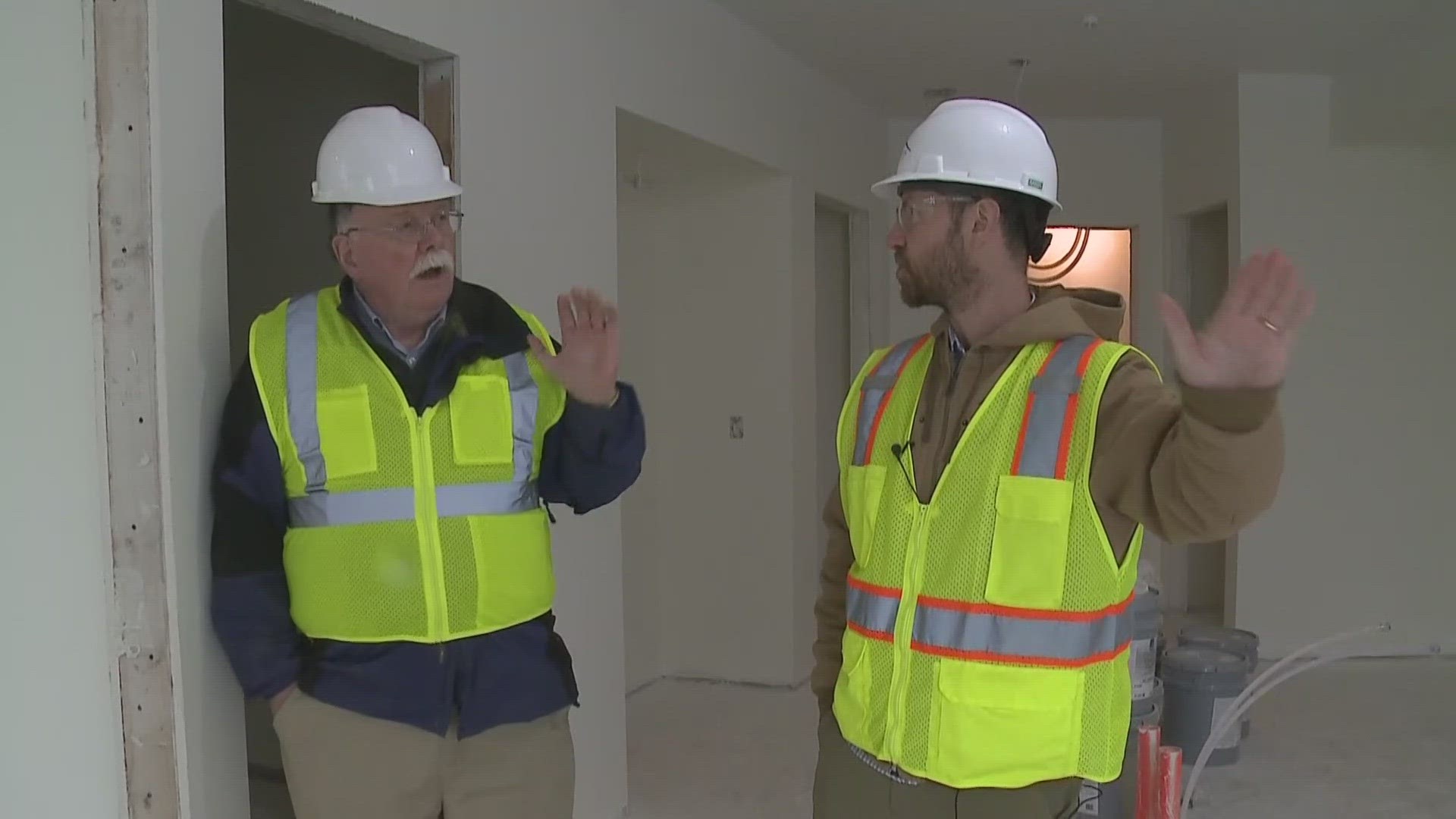BRUNSWICK, Maine — The four-story apartment building at Brunswick Landing has gone up quickly.
"When you have 30 to 50 workers on site a day, a lot can happen,” David Holman, developer of the 63-unit project called "The Sandpiper," said.
It will be a primarily market rent project but includes several “affordable” apartments with reduced rent, as required by town ordinances, he said. A Tax arrangement with the town helps to reduce costs and make the affordable units possible.
He described many of the regular rents as being in the $1,800-2,000 range, with some higher depending on location and number of rooms.
"We are targeting the middle of the income spectrum: teachers, firefighters, policemen, who are making $40,000-80,000 a year.”
Brunswick has seen hundreds of new apartments built over the last three years, thanks in part to available space at Brunswick Landing that was designated for housing as part of its plan. Brunswick is also a comfortable commuting distance from Portland and becoming steadily more popular as a place to live.
It's something of a bright spot in Maine’s housing crisis, which has become more severe since the 2020 pandemic, and illustrates a dramatic need, statewide, for more homes.
"We need about 80,000 units by 2030 in order to meet the need," Dan Brennan, director of Maine Housing, said. "That’s low income, moderate income, market rate, higher end, across the whole spectrum.”
The problem has become acute in some places, especially for low and middle-income renters, as rising housing values, and dramatically increased building costs have forced rents to increase. The population has also been growing in some parts of the state, putting more pressure on the housing market.
Brennan said Maine Housing has been able to use additional state and federal funding to build more subsidized units, but rising building costs aren’t helping.
"We were building in an environment where a 30-unit apartment building...we could do a project for $150,000-175,000 per unit. Now it's $320,000 per unit. It’s the cost of materials, supply chain issues, and overall, inflation," Brennan said.
At the same time, higher interest rates and price spikes have slowed single-family home sales. Real estate brokers have reported fewer sales because of fewer homes on the market, which has also helped to drive up prices.
The most recent data showed the median sale price of a single-family home in Maine at roughly $360,000. However, in the more prosperous areas of Cumberland and York Counties, and some parts of the coast, prices are often far higher.
At the same time, Mainer's income has not kept up with the cost of housing.
"We really need the private [housing] market to get to the level we need," Brennan said of home construction. "What we are dealing with is a supply and demand problem, and when you get more to the market, the market will deal with it."
In Brunswick, Holman is trying to meet some of the needs in his market. But he said developers could build far more housing if they weren’t restricted by local zoning regulations, limiting the density of development. Holman said his own project is significantly smaller than he originally wanted, because of local density rules.
"Brunswick did a great job helping us get this done, but there are density limits. It’s a 24-unit per acre zone. Why are we limiting density in the middle of a housing crisis?" Holman stated.
At the same time, the largest housing sector—single-family homes—sees relatively little construction of moderately priced single-family houses. And little of any building of small "starter homes," that once were common in Maine.
"It has become dramatically more difficult to make the numbers work for a small single-family subdivision,” Brennan said.
He said Maine Housing is making more investments to subsidize that construction, which like all of their housing, is for people within certain income limits.
One answer to high single-home costs is manufactured housing—mobile homes, double wides, and smaller modular houses. There, prices can be significantly lower, depending on land ownership and other factors.
Brennan said the quality of those units is much improved over what it once was. He added that he would like to see a significant expansion of home manufacturing in Maine, both to provide jobs and potentially more affordable units. However, in some communities manufactured housing may face zoning restrictions.
In Brunswick, Holman said The Sandpiper Apartments should be ready to rent this summer, and expects a lot of interest because of its location, green energy and building technology, amenities, and overall design.
Brennan said they are hoping for continued and expanded state and federal funding to help provide more affordable housing and middle-income housing where it is needed.
He said he's waiting and hoping for interest rates to go down, and for more people to look to sell their own home and move up to a better one, which in turn will loosen up the market.
"Maybe there's a manufacturing facility cranking out 250 homes a year, maybe our friends at the University of Maine will have perfected their 3D house….I wouldn’t be doing this work if I didn’t think we could make a difference.”

